Small white kitchens marry timeless elegance with clever design strategies, proving that limited square footage needn’t cramp style or functionality. By maximizing natural light, selecting crisp white cabinetry, and incorporating reflective surfaces, these cozy culinary spaces feel airy and spacious. Thoughtful additions—like glass-front cabinets, light countertops, and subtle textures—add visual depth without clutter. Open shelving, patterned backsplashes, and metallic accents inject personality, while minimalist appliances and integrated lighting maintain a streamlined look. Mirrors and plants bring life and brightness, and multifunctional furniture alongside built-in storage optimizes every inch. Contrasting hardware, warm wood elements, and statement lighting personalize the monochrome palette, and a balanced mix of warm and cool tones ensures inviting harmony. Keeping décor minimal completes the refined, cohesive aesthetic.
1. Maximize Natural Light
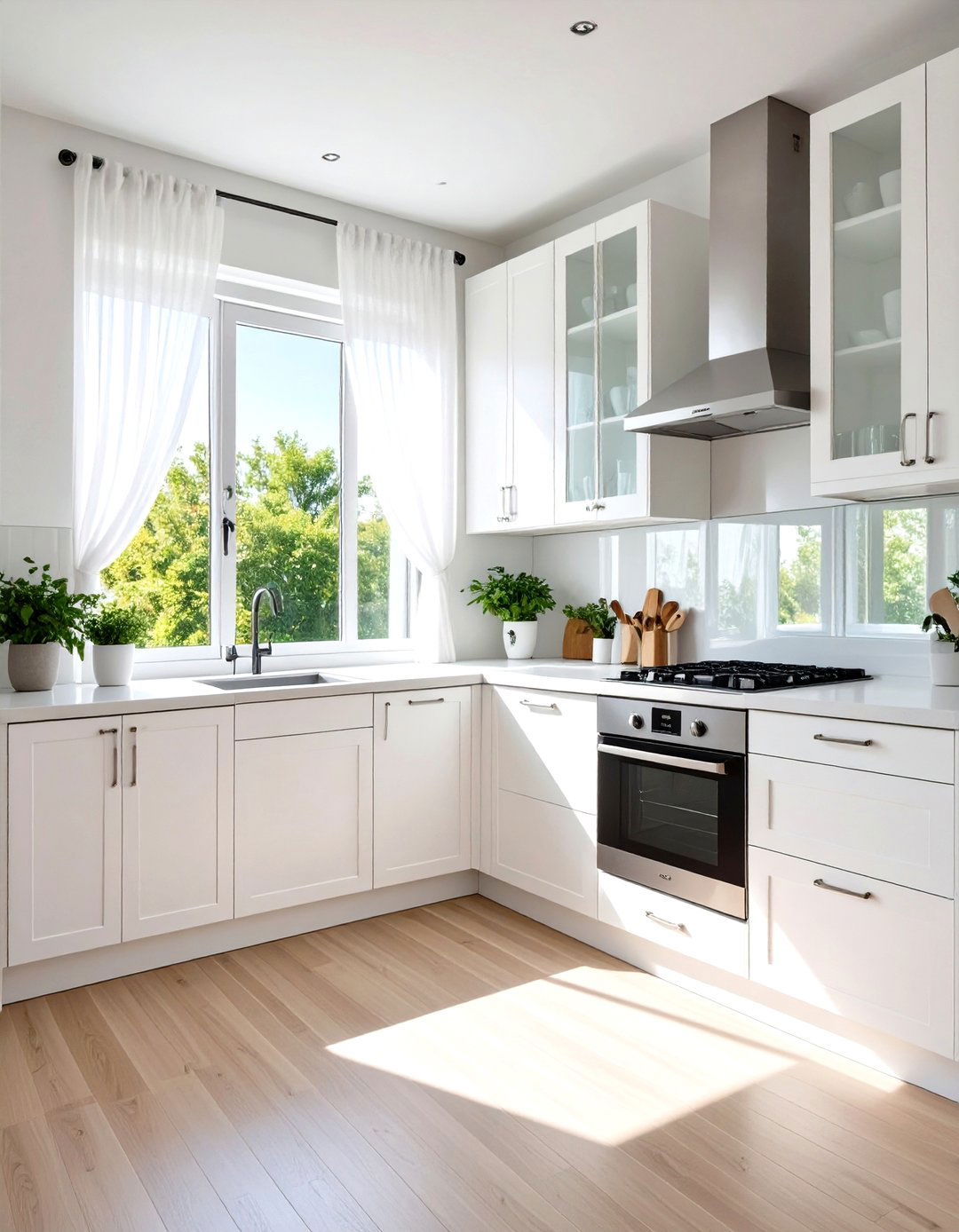
Flooding a small kitchen with natural light instantly enhances its sense of space and well-being. Designers recommend using sheer window treatments or none at all, keeping windowsills clear of objects, and positioning mirrors or glass décor to bounce light deeper into the room. High-reflectance light paint colors on walls and ceilings also amplify daylight, making every corner feel brighter. In small white kitchens, these strategies combine with the white palette to create a luminous, inviting atmosphere that feels more open than the actual footprint.
2. Use White Cabinetry
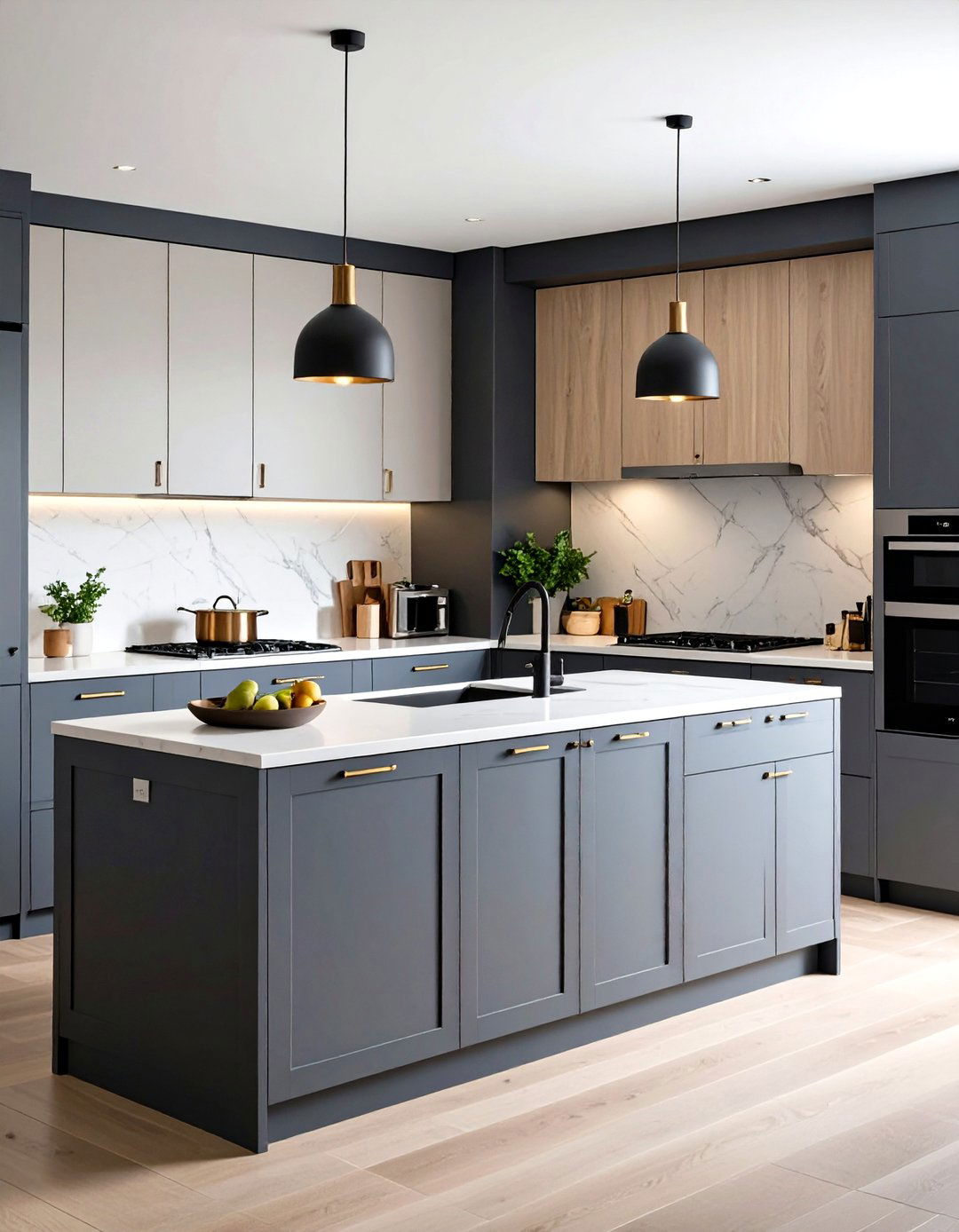
Choosing white cabinetry is foundational in small kitchen design, as white never goes out of style and provides a clean backdrop that can evolve with changing décor. Opt for high-quality finishes like matte or low-sheen, which conceal fingerprints better than glossy surfaces. The variety of white shades—from cool alabaster to warm ivory—allows personalization: cooler whites lend a modern edge, while warmer whites contribute to a cozy farmhouse vibe. Investing in timeless white cabinets means your kitchen will remain fresh and adaptable through years of design trends.
3. Incorporate Glass-Front Cabinets

Glass-front upper cabinets introduce visual weightlessness and break up expanses of solid cabinetry. They encourage neat, curated displays of dishes and glassware, making décor part of your storage solution. Internally lit glass cabinets further enhance the effect by highlighting prized items and adding ambient glow. Combining transparent and opaque cabinet doors strikes a balance between open display and hidden storage, ensuring the kitchen remains organized without appearing closed-in.
4. Choose Light Countertops
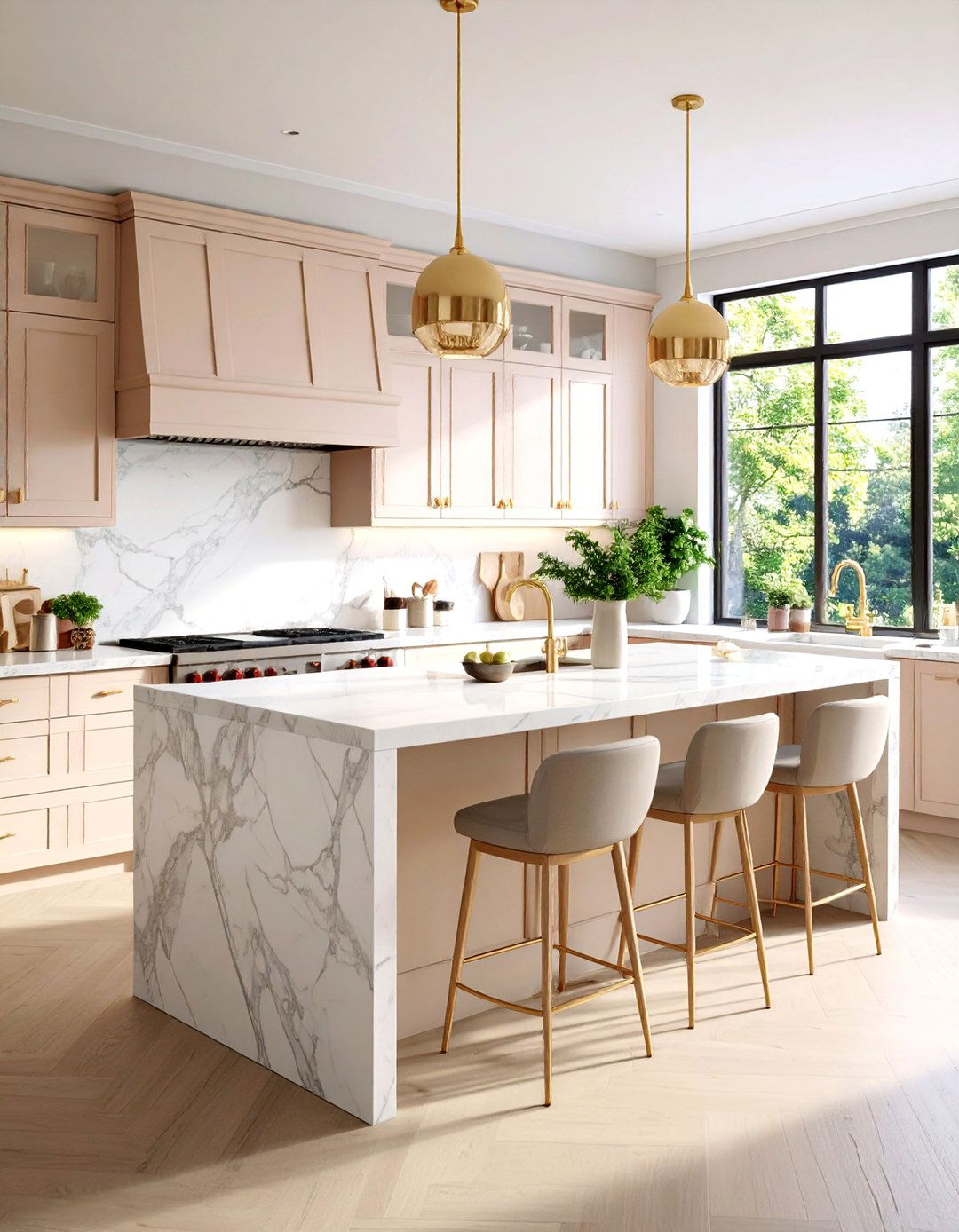
Light countertops—such as quartz, marble, or light-toned butcher block—reflect both natural and artificial light, reinforcing the white palette and keeping visuals airy. Subtle veining in marble or delicate flecks in quartz add depth without overwhelming the space. For a cohesive look, coordinate countertop edges and finishes with cabinet hardware or backsplash materials. A smooth, light countertop surface also contributes to a seamless, uncluttered workspace, ideal for cooking and entertaining in a small kitchen.
5. Add Subtle Texture
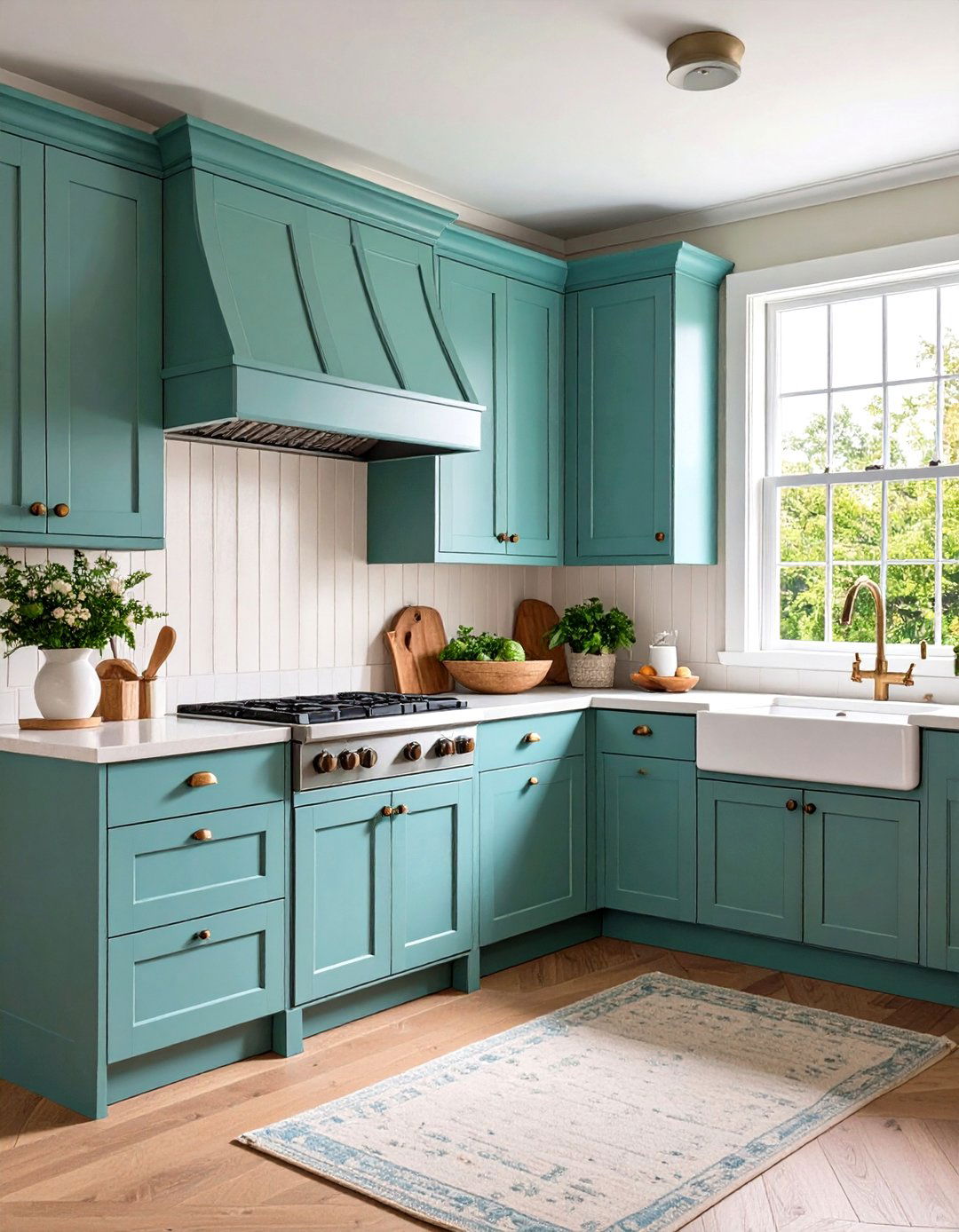
To prevent an all-white kitchen from feeling flat or clinical, incorporate gentle texture through materials like beadboard paneling, shiplap backsplash, or linen-textured cabinet fronts. Textured wallpaper or soft-touch cabinetry finishes contribute warmth and interest without relying on bold color. Mix materials—such as matte ceramics, woven placemats, and natural-fiber rugs—to layer tactile elements that draw the eye and invite touch, elevating the white backdrop with visual richness and comfort.
6. Opt for Open Shelving

Open shelving maximizes storage potential and maintains an uncluttered, airy feel by eliminating heavy upper cabinets. Display essentials—like white dinnerware, cookbooks, or clear glass jars—carefully and sparingly to keep the look organized. Floating shelves in wood or metal provide contrast and warmth, while integrated under-shelf lighting illuminates both the items and the workspace below. This approach encourages thoughtful curation and keeps everyday items within easy reach.
7. Play with Patterns in Backsplash
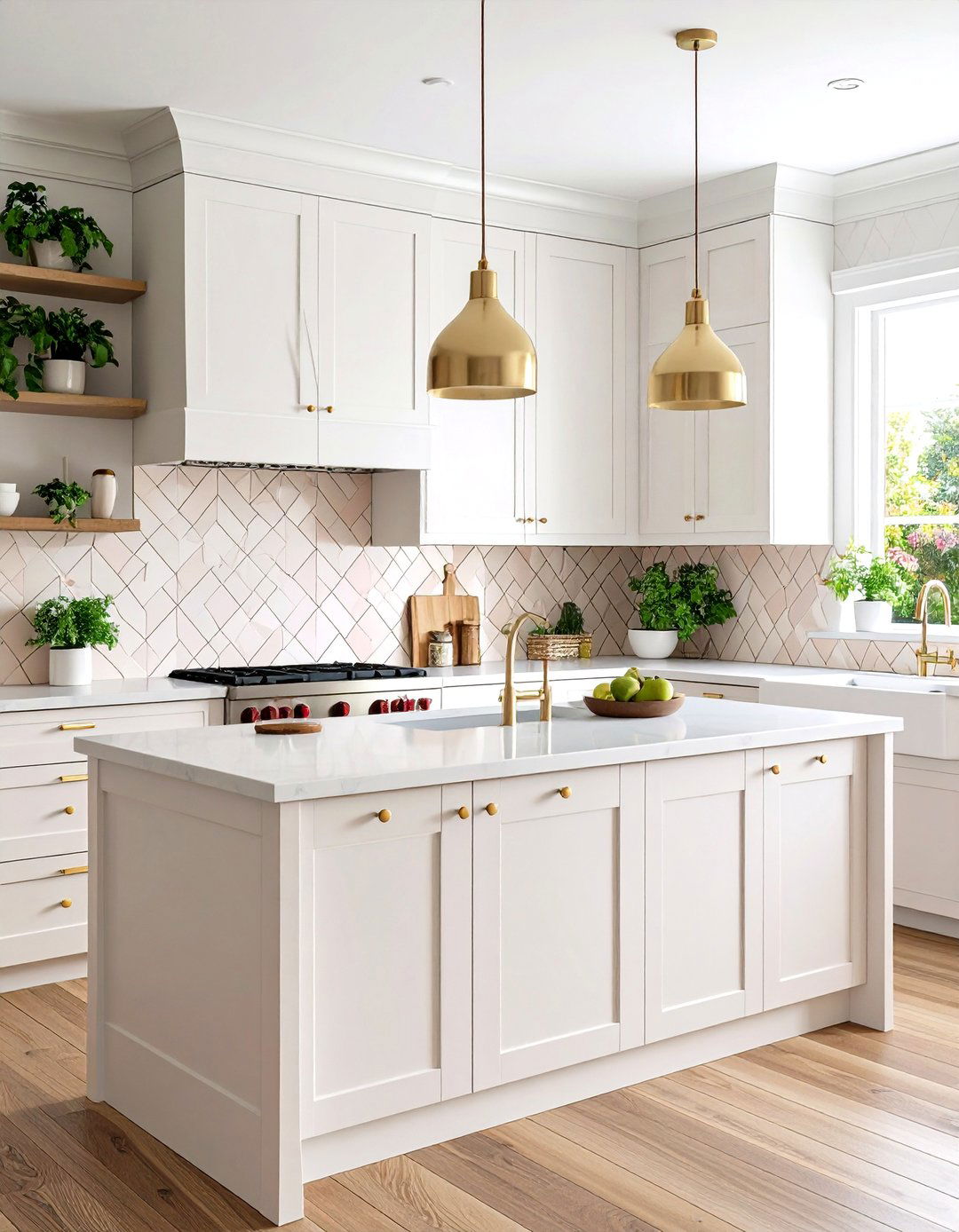
A backsplash with geometric or patterned tile adds character without overwhelming a small white kitchen. Triangle, hexagon, or subway tiles laid in herringbone or chevron introduce subtle graphic interest. Choosing a muted palette—white tiles with soft gray or pastel accents—ensures the pattern enhances rather than dominates. The backsplash serves as a focal point and conversation piece, while the overall color scheme remains light and cohesive.
8. Introduce Metallic Accents

Metallic finishes—such as brass faucets, copper pendant lights, or gold-tone cabinet hardware—add warmth and sophistication to a white kitchen. These accents catch light and create focal highlights that contrast beautifully with crisp white surfaces. For cohesion, repeat the metallic tone across multiple elements—light fixtures, hardware, and décor—to unify the design. Balancing mixed metals (e.g., brushed nickel with warm brass) can further enrich the palette without cluttering the space.
9. Keep Appliances Minimal
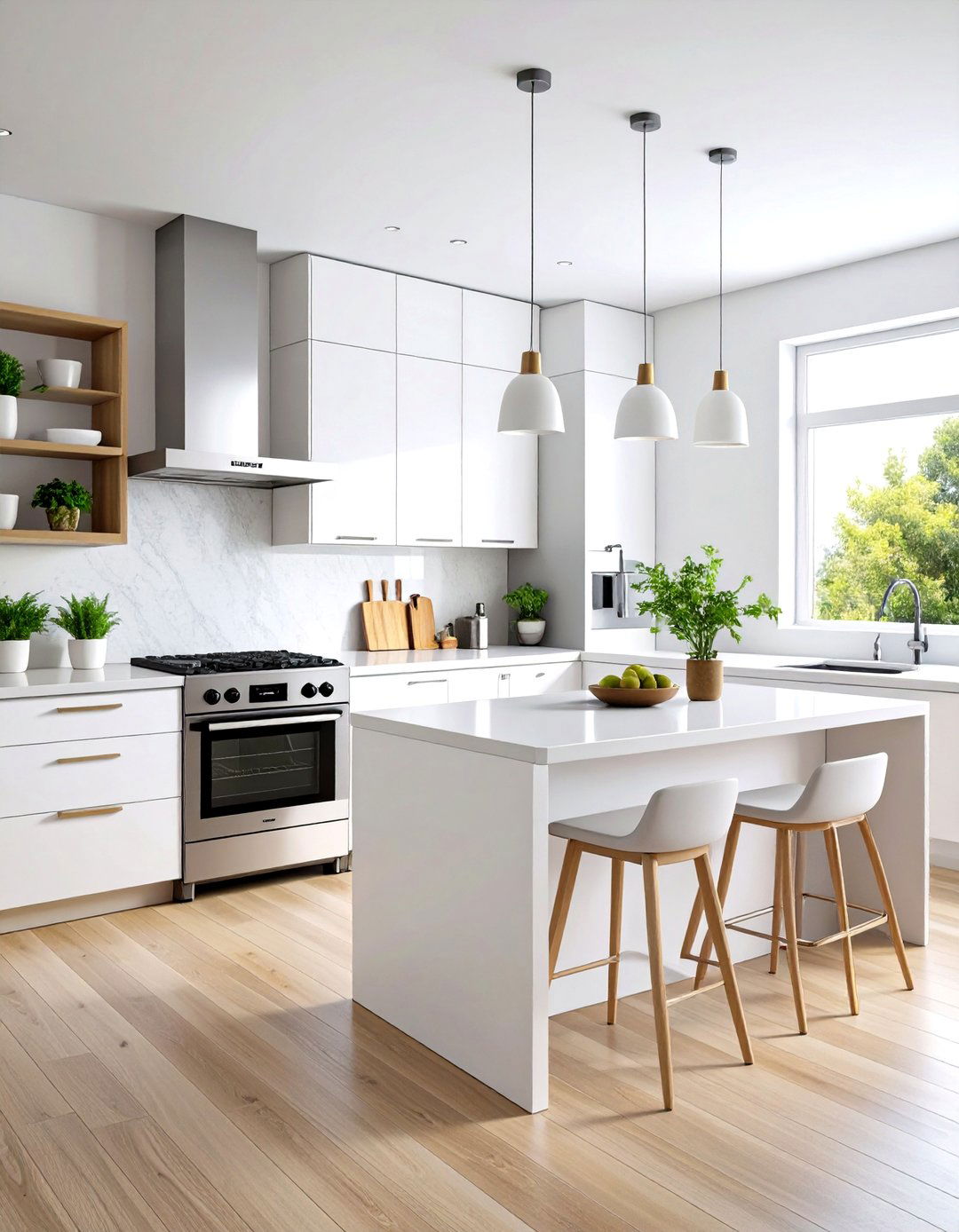
Integrated, panel-ready appliances blend seamlessly into cabinetry, maintaining a streamlined, expansive look. Choose compact models—like slimline dishwashers or under-counter refrigerators—to preserve valuable floor space. When visible, opt for sleek, handle-free designs or choose stainless steel or white finishes that complement the cabinetry. Minimalist appliances reduce visual clutter and let the kitchen’s architectural and stylistic features shine.
10. Integrate Under-Cabinet Lighting
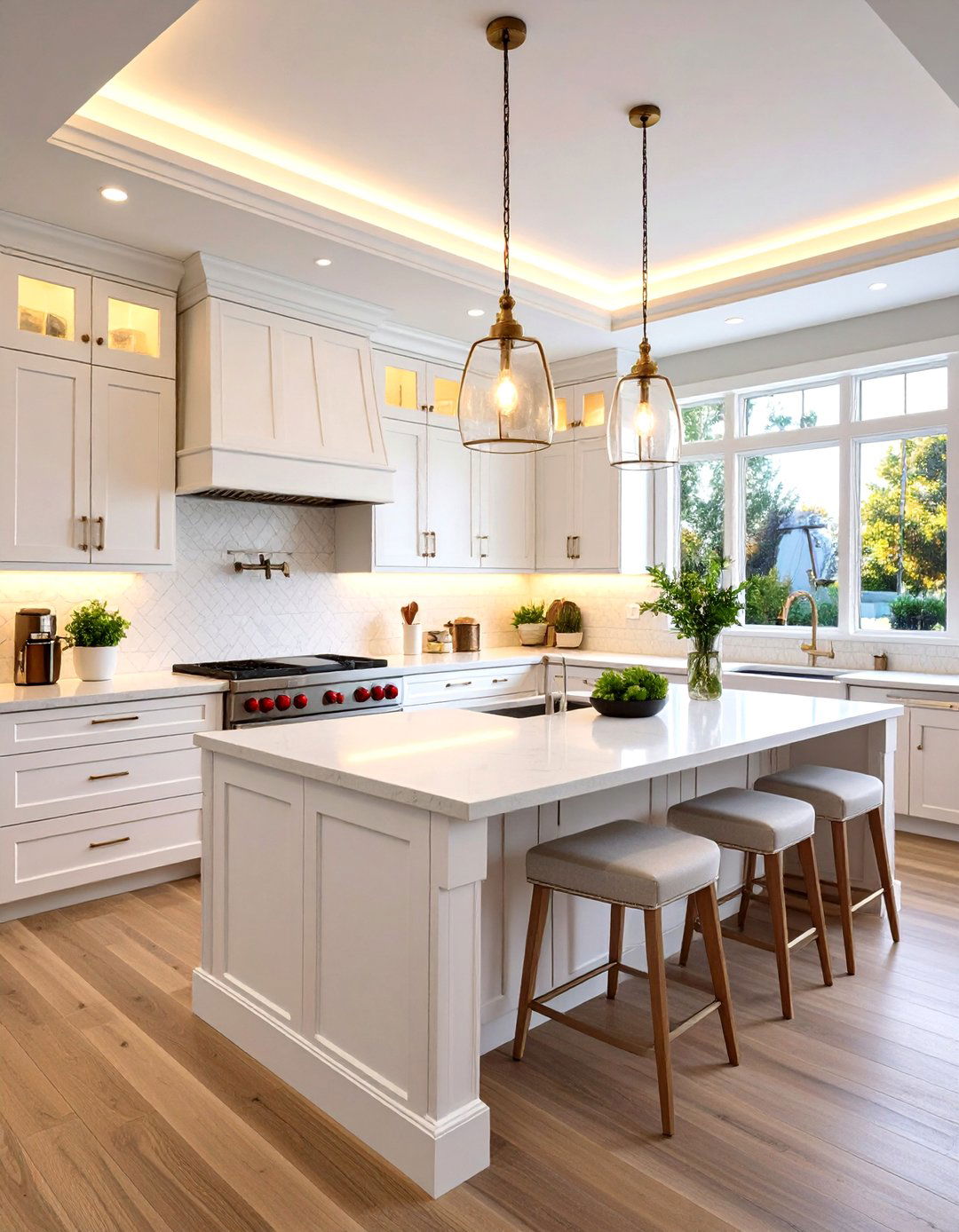
Under-cabinet LED strips or puck lights illuminate countertops for both functionality and ambiance. This layer of lighting eliminates shadows in prep zones and showcases backsplash textures. Choose fixtures that match cabinet interiors or are hidden from direct view to avoid clutter. The soft glow from below cabinets enhances the kitchen’s warmth and makes evening cooking inviting, all while maintaining the clean, white aesthetic.
11. Use Mirrors and Reflective Surfaces
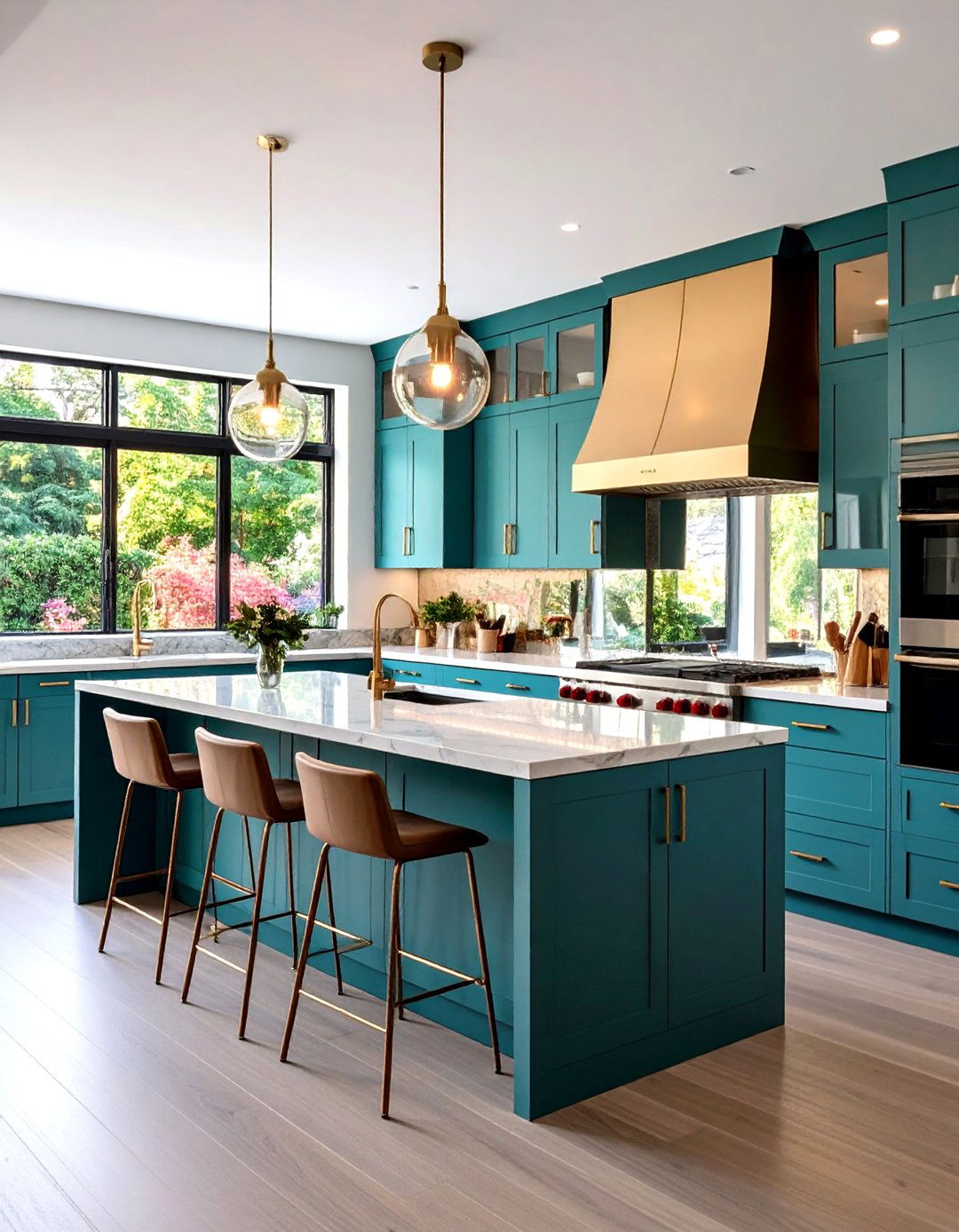
Strategically placing mirrors, mirrored tiles, or high-gloss backsplashes reflects light and visually doubles the perceived space. Mirrored cabinet doors or a mirrored panel above the range can amplify brightness and depth. Glossy white or light-reflective glass surfaces draw the eye outward, creating the illusion of a larger room—an invaluable trick in compact kitchens.
12. Add Greenery
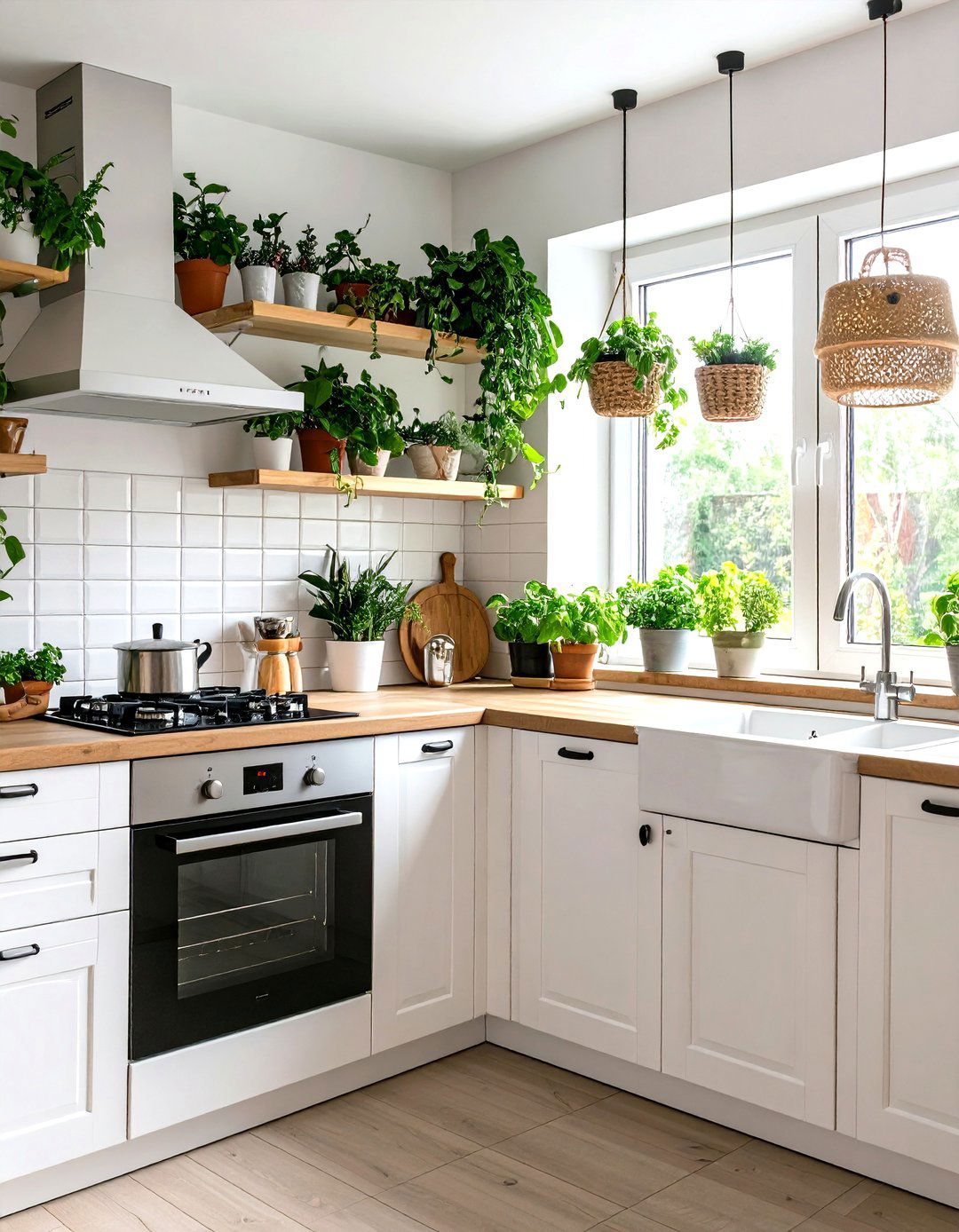
Introducing houseplants softens the white palette and brings organic life into the kitchen. Small potted herbs on windowsills provide fresh ingredients for cooking and enhance air quality. Hanging planters or a vertical herb wall maximize floor space while adding vibrant green accents. Plants create a serene, natural focal point that balances the pristine white surroundings.
13. Use Multifunctional Furniture
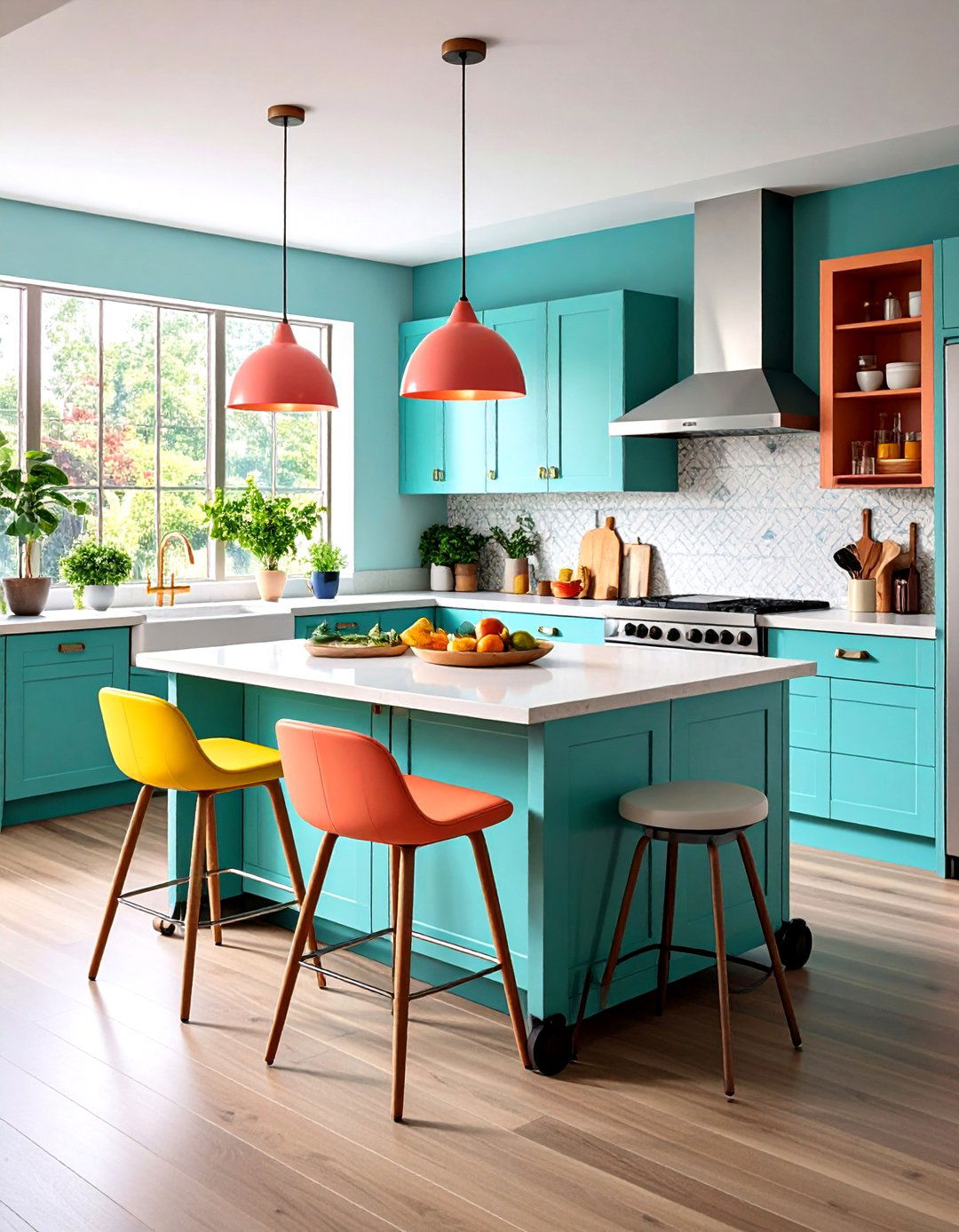
In tight spaces, choose furniture that doubles as storage or extra work surface. A rolling cart prep station can tuck under a countertop when not in use, while a drop-leaf table serves as both an island and dining spot. Stools that nest beneath the counter and benches with built-in storage keep clutter at bay. Multifunctional pieces adapt to different tasks, maximizing every inch.
14. Incorporate Built-In Storage
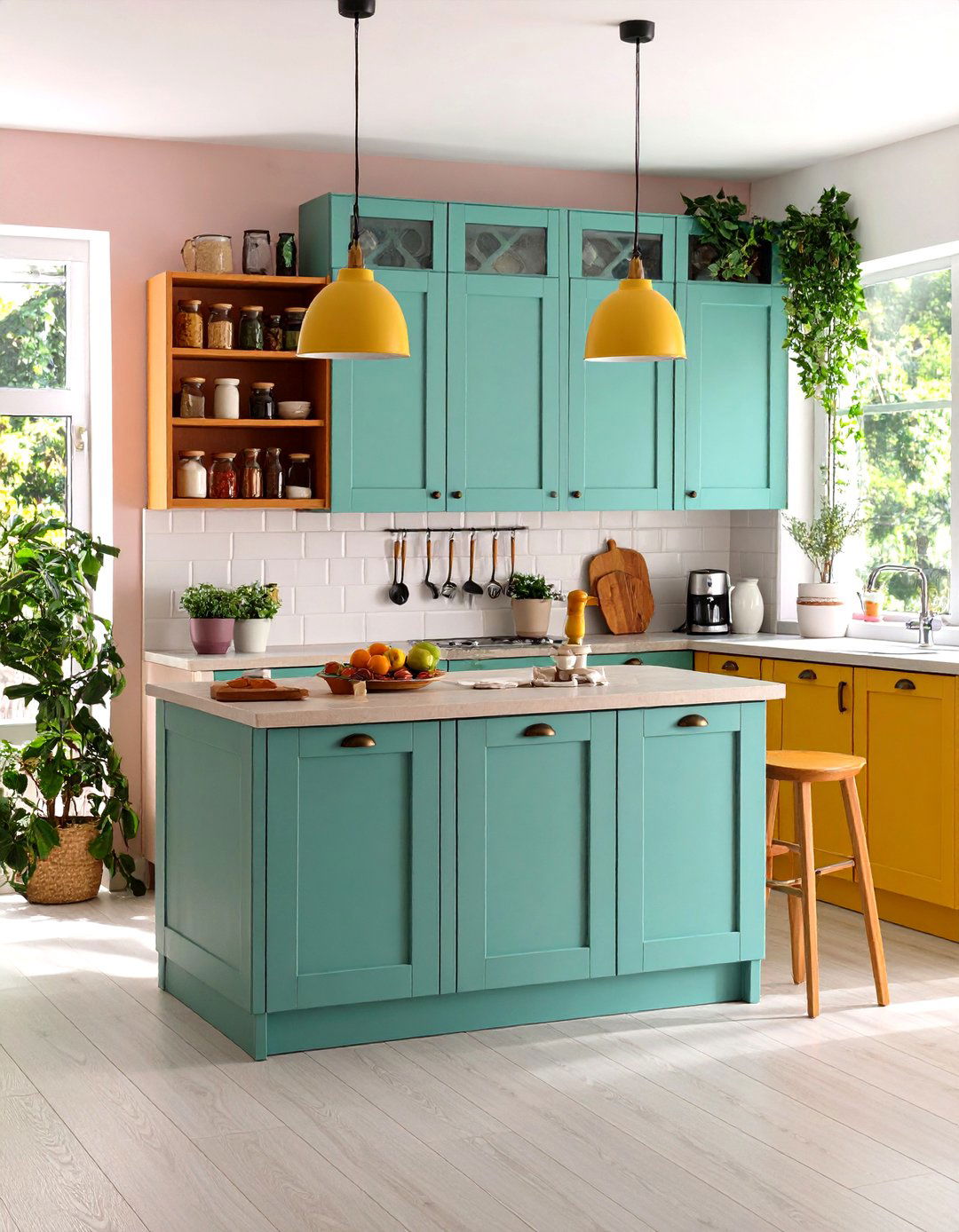
Floor-to-ceiling cabinetry, hidden pantries, and pull-out shelving systems optimize vertical space and reduce the need for freestanding furniture. Built-in spice racks, utensil drawers, and appliance garages keep countertops clear. Seamlessly integrated storage solutions maintain a clean silhouette while ensuring everything has a dedicated place.
15. Embrace a Monochrome Palette

Sticking to whites and neutrals prevents visual fragmentation in small kitchens. Different textures and finishes—matte, satin, or gloss—provide subtle contrast within the single color scheme. Monochrome styling unifies elements, creating a cohesive, gallery-like aesthetic that feels calm and spacious.
16. Use Contrasting Hardware
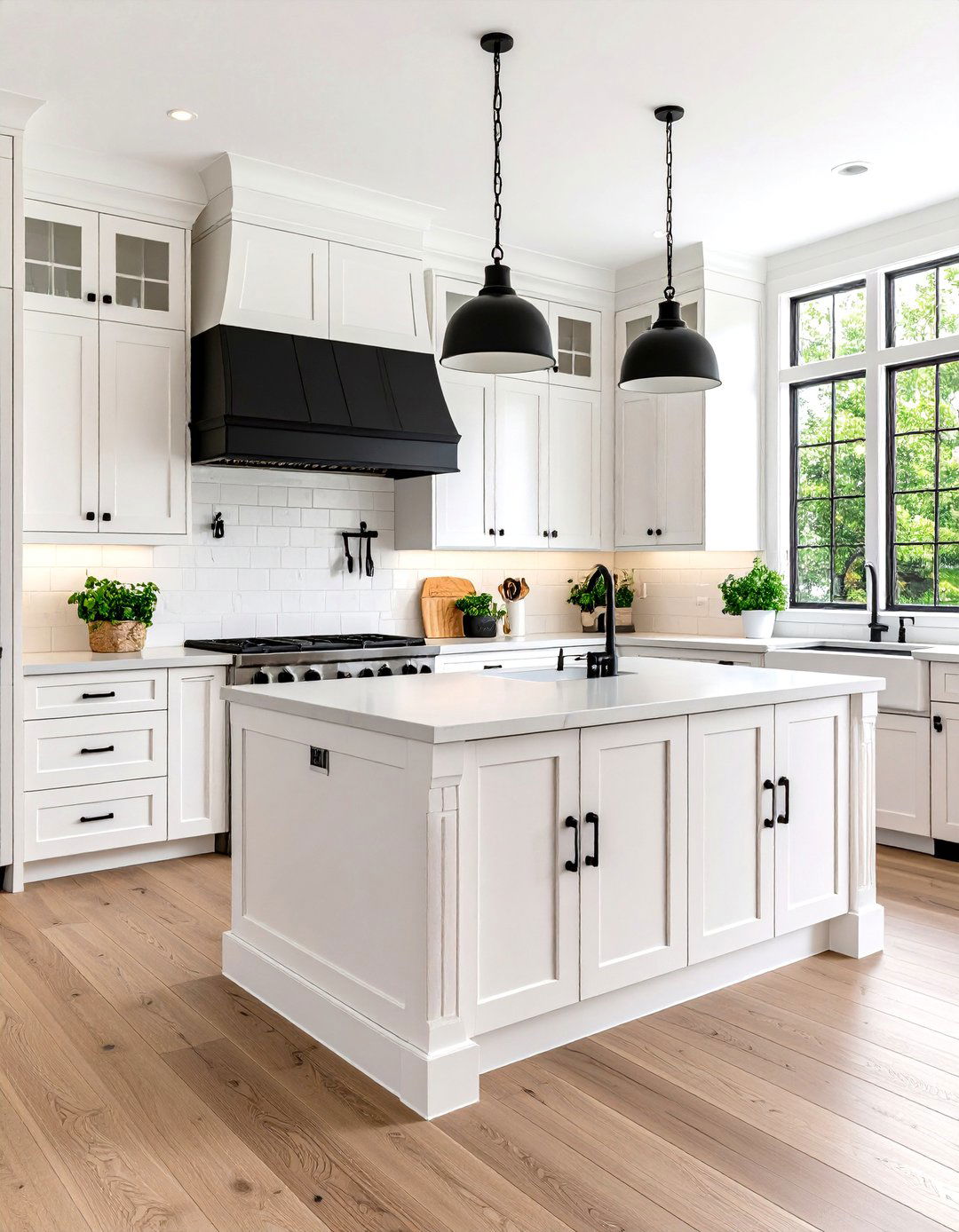
Bold hardware—in matte black, brushed bronze, or polished nickel—creates points of interest against white doors. Black pulls stand out crisply on white drawers, while warm gold knobs add a touch of luxury. Select hardware styles that reflect your kitchen’s overall vibe—minimalist, vintage, or industrial—for cohesive design continuity.
17. Incorporate Wood Elements
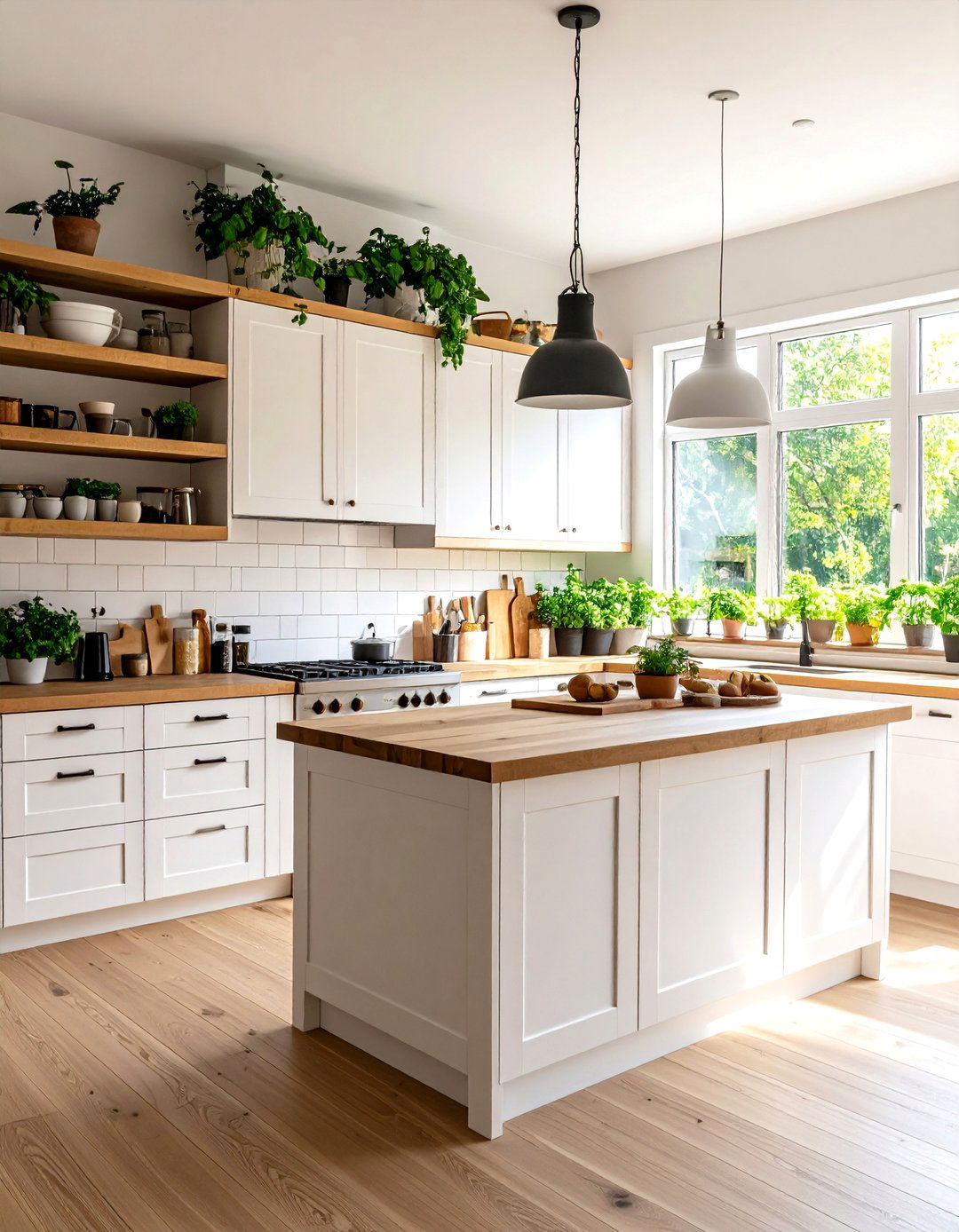
Natural wood tones—from light oak to rich walnut—infuse warmth into an all-white kitchen. Wood open shelves, butcher-block countertops, or a wooden island base serve as organic counterpoints to the white surroundings. This blend of materials grounds the space and adds tactile diversity without color overload.
18. Introduce Statement Lighting

Eye-catching pendant lights or sculptural chandeliers pull focus and elevate style. In a small white kitchen, a bold light fixture above the island or sink area becomes functional art. Choose finishes that tie into other metallic accents, and ensure the scale is proportionate so it neither dominates nor disappears.
19. Balance Warm and Cool Tones

Combining cool whites with warm undertones—such as creamier wall paint or wood accents—prevents an overly sterile feel. Similarly, pairing bright white marble with warmer veined patterns softens harsh contrasts. Achieving equilibrium between warm and cool elements ensures a welcoming, sophisticated ambiance.
20. Keep Décor Minimalist
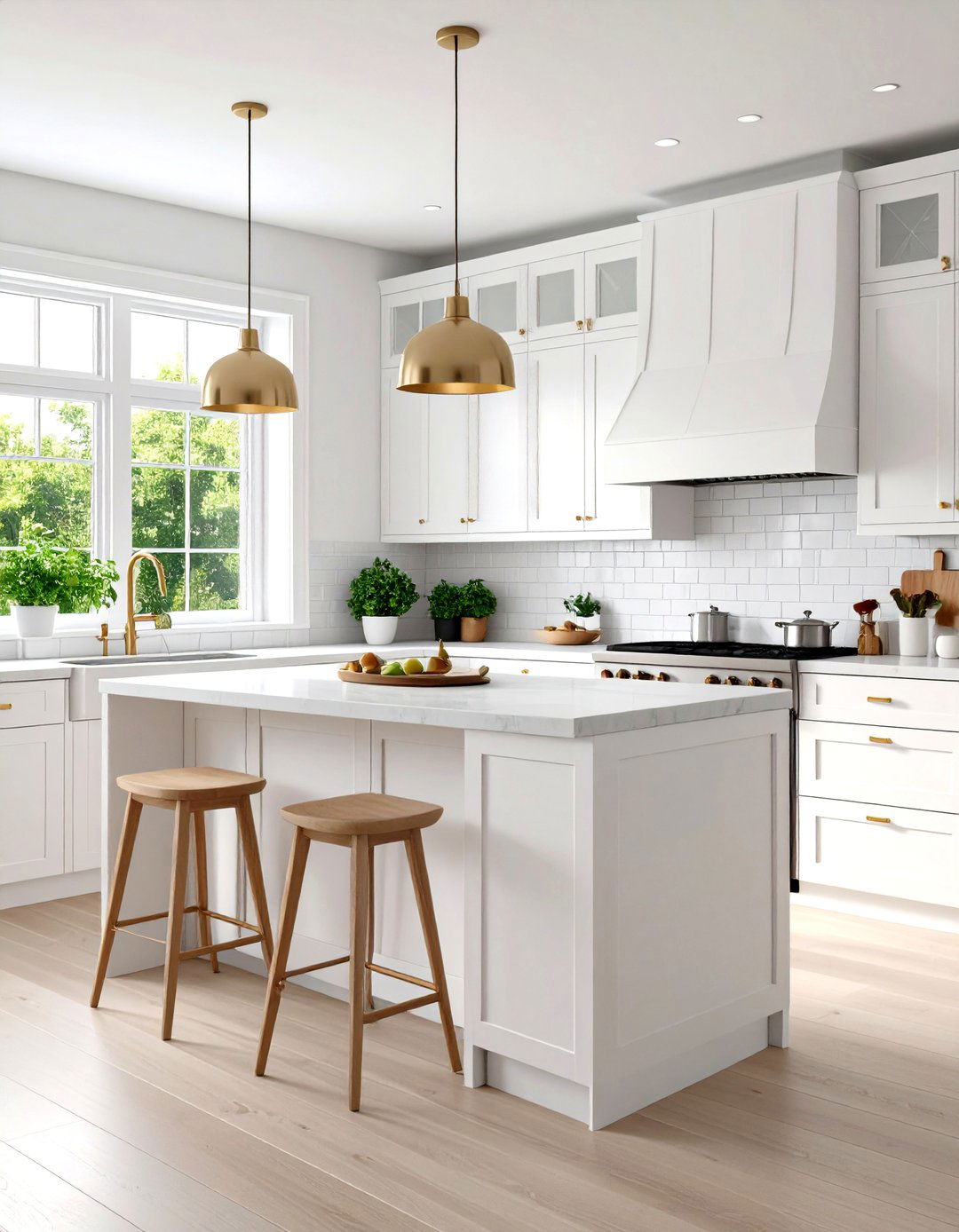
Lastly, curate décor carefully: a few well-chosen artworks, a single vase, or a sculptural bowl suffice. Clutter-free countertops and open shelves maintain the kitchen’s airy feel. Embrace “less is more” in accessories to let architectural details and high-quality finishes take center stage.
Conclusion:
By weaving together strategies like maximizing light, layering textures, and integrating smart storage, small white kitchens transcend spatial constraints to feel generous and refined. A harmonious interplay of monochrome palettes, mixed materials, and deliberate accents—paired with minimalist décor and multifunctional elements—creates inviting, functional kitchens that stand the test of time. Whether renovating or styling a compact space, these 20 ideas prove that small white kitchens can be both practical workhorses and elegant showpieces.


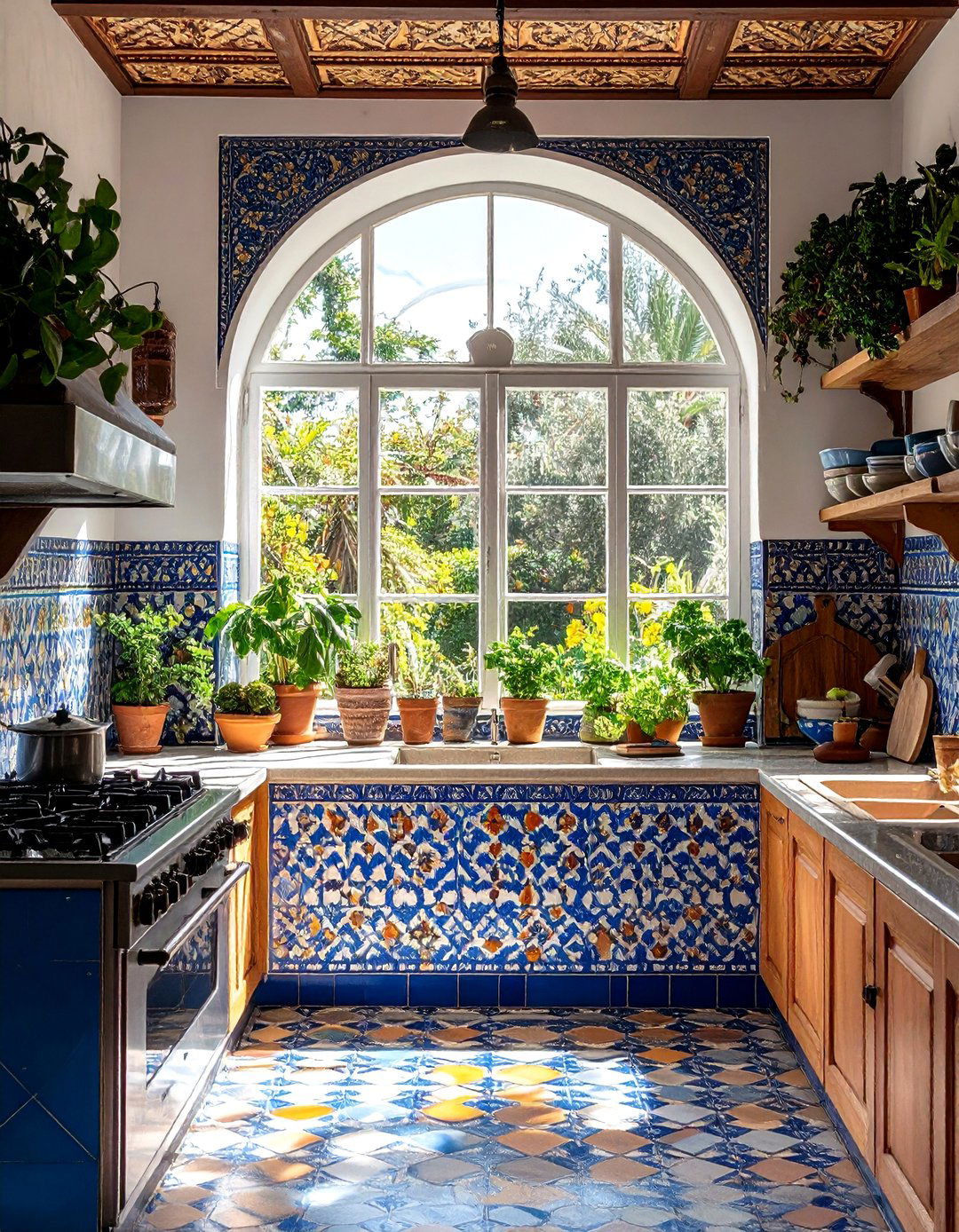
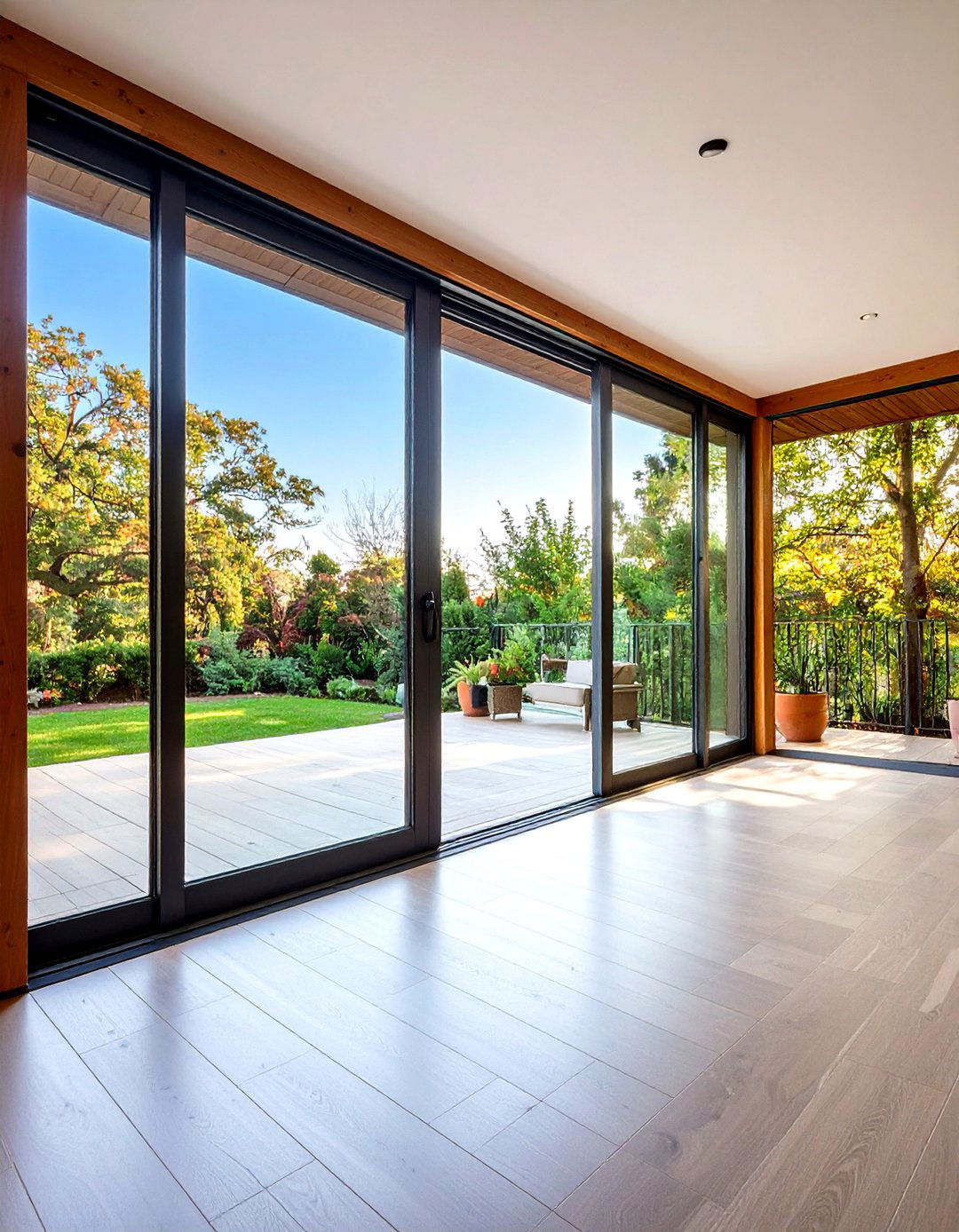
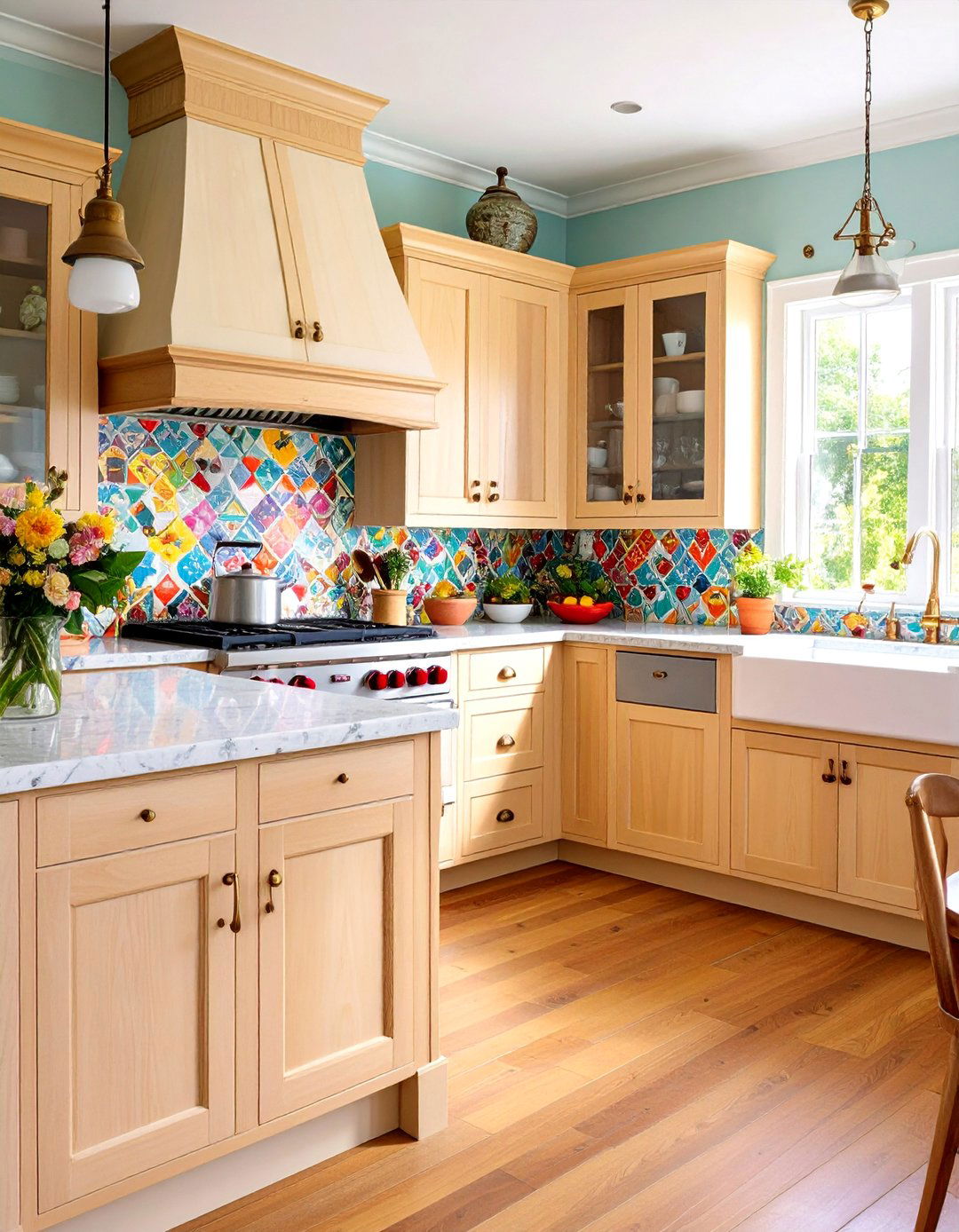
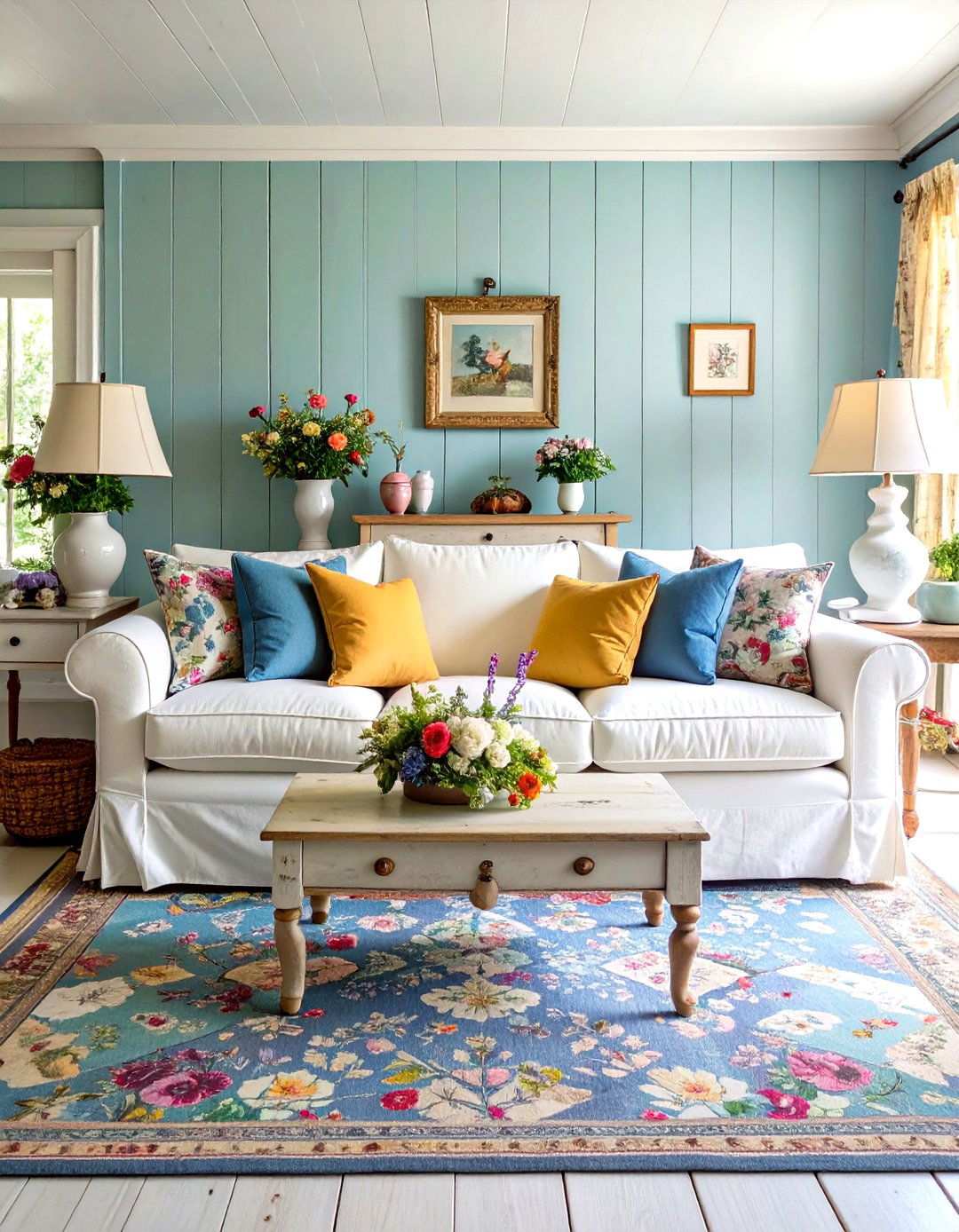
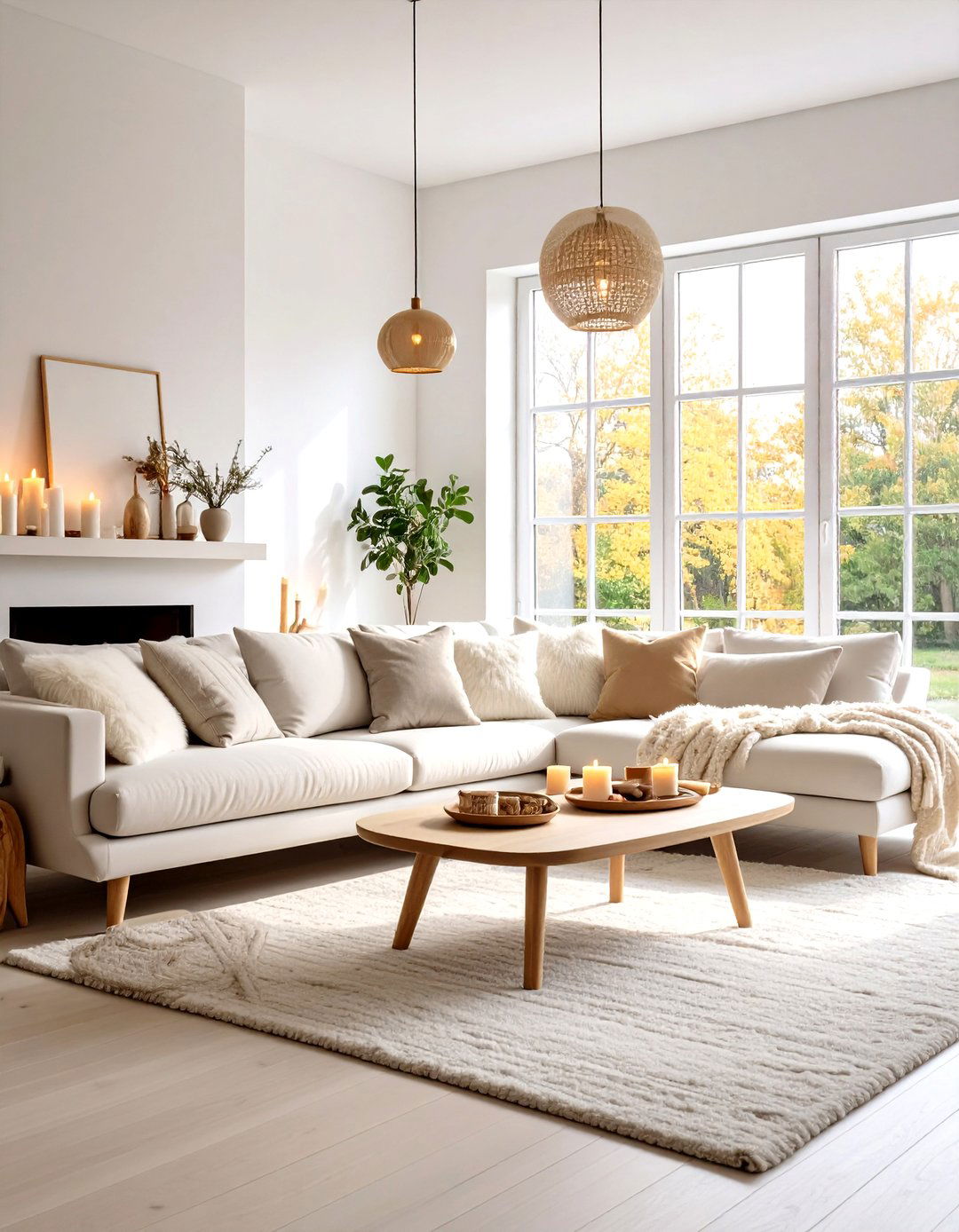


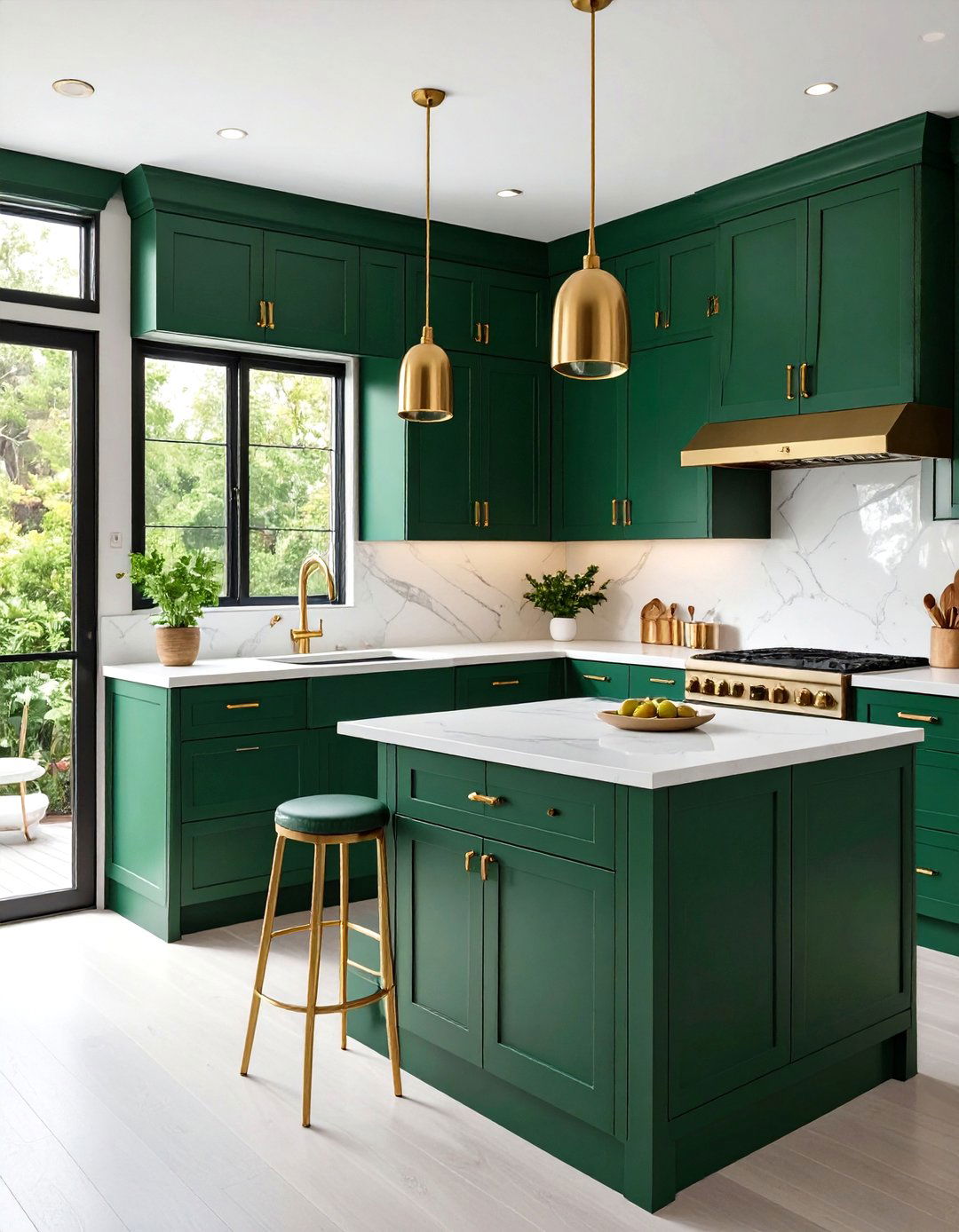
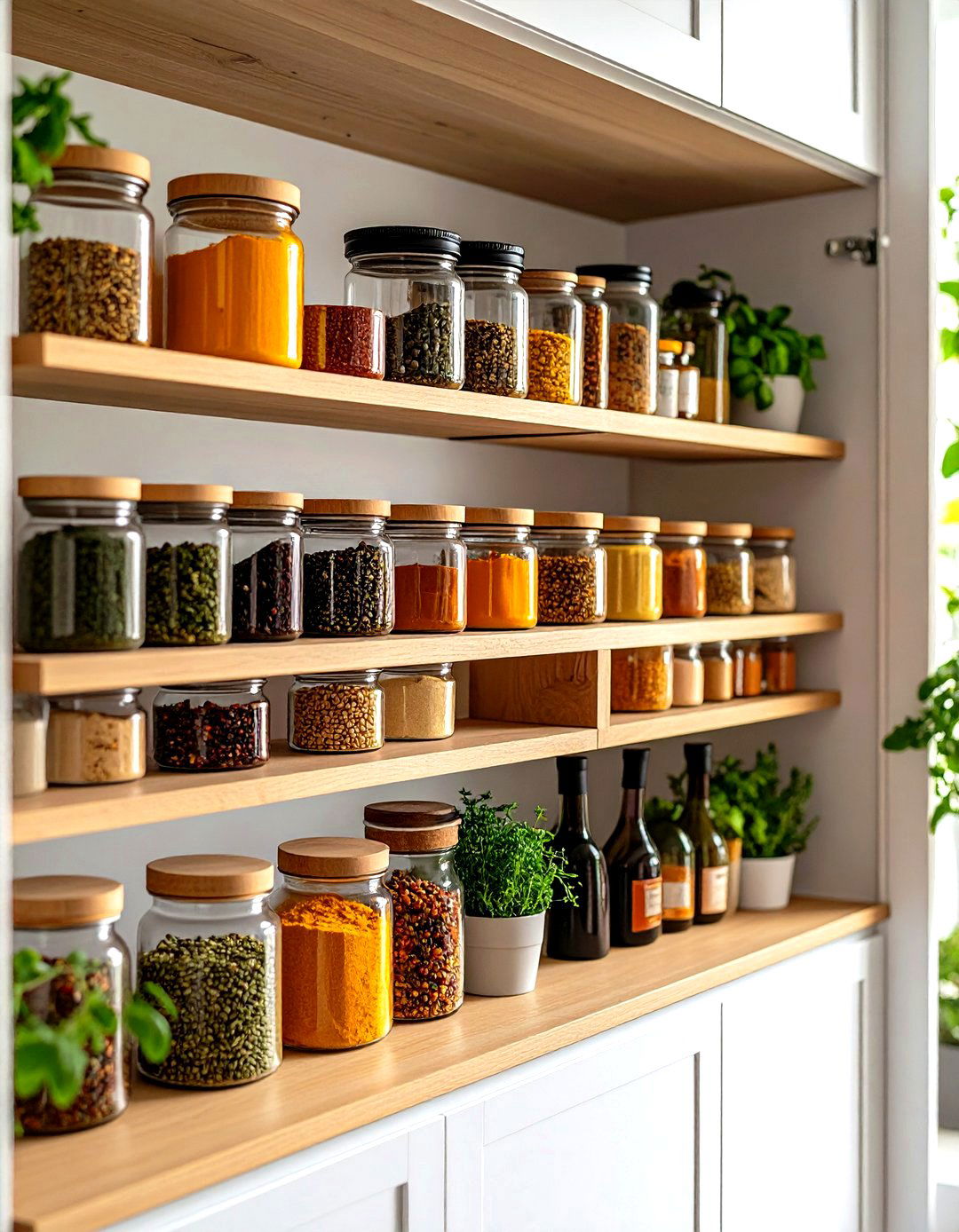
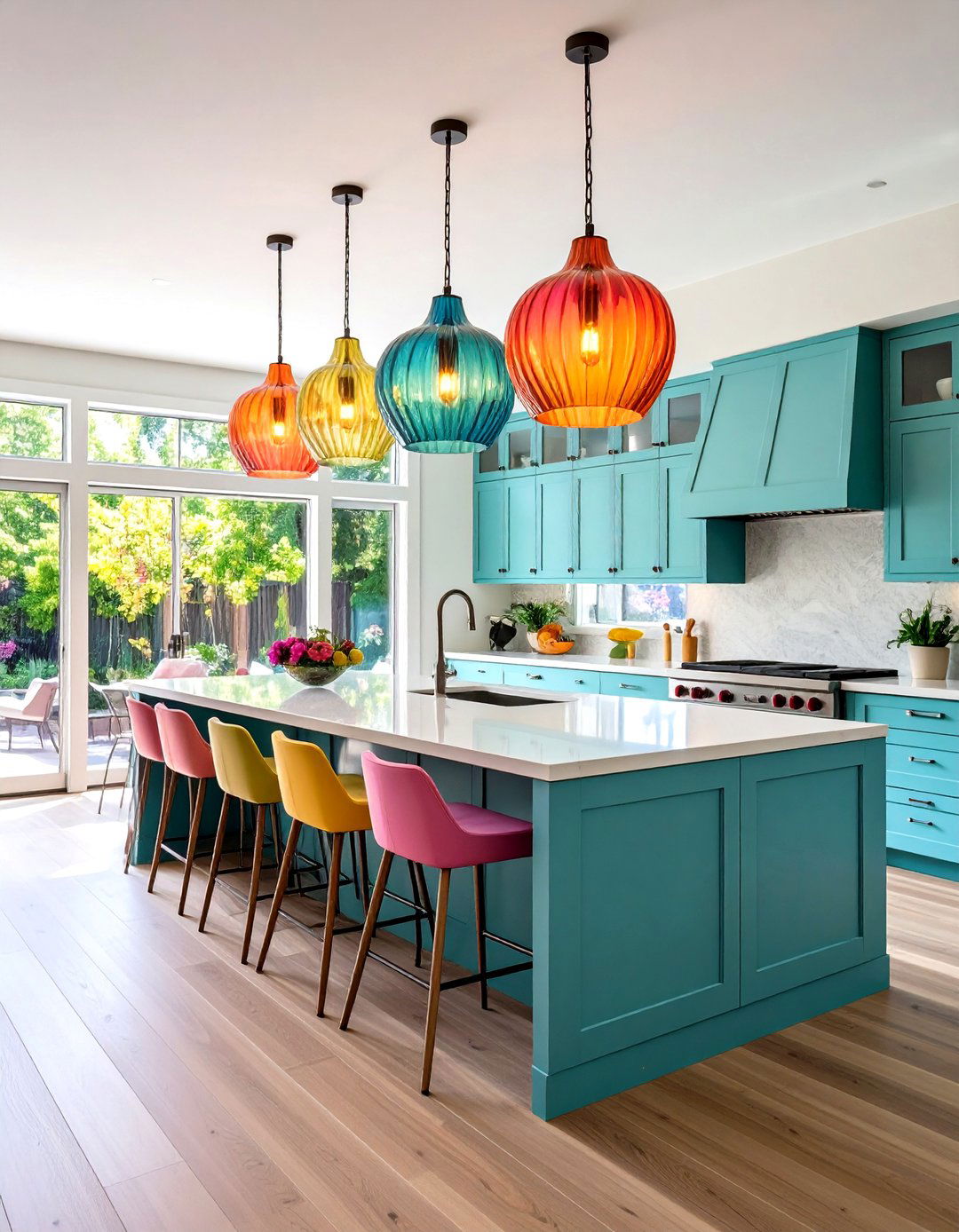
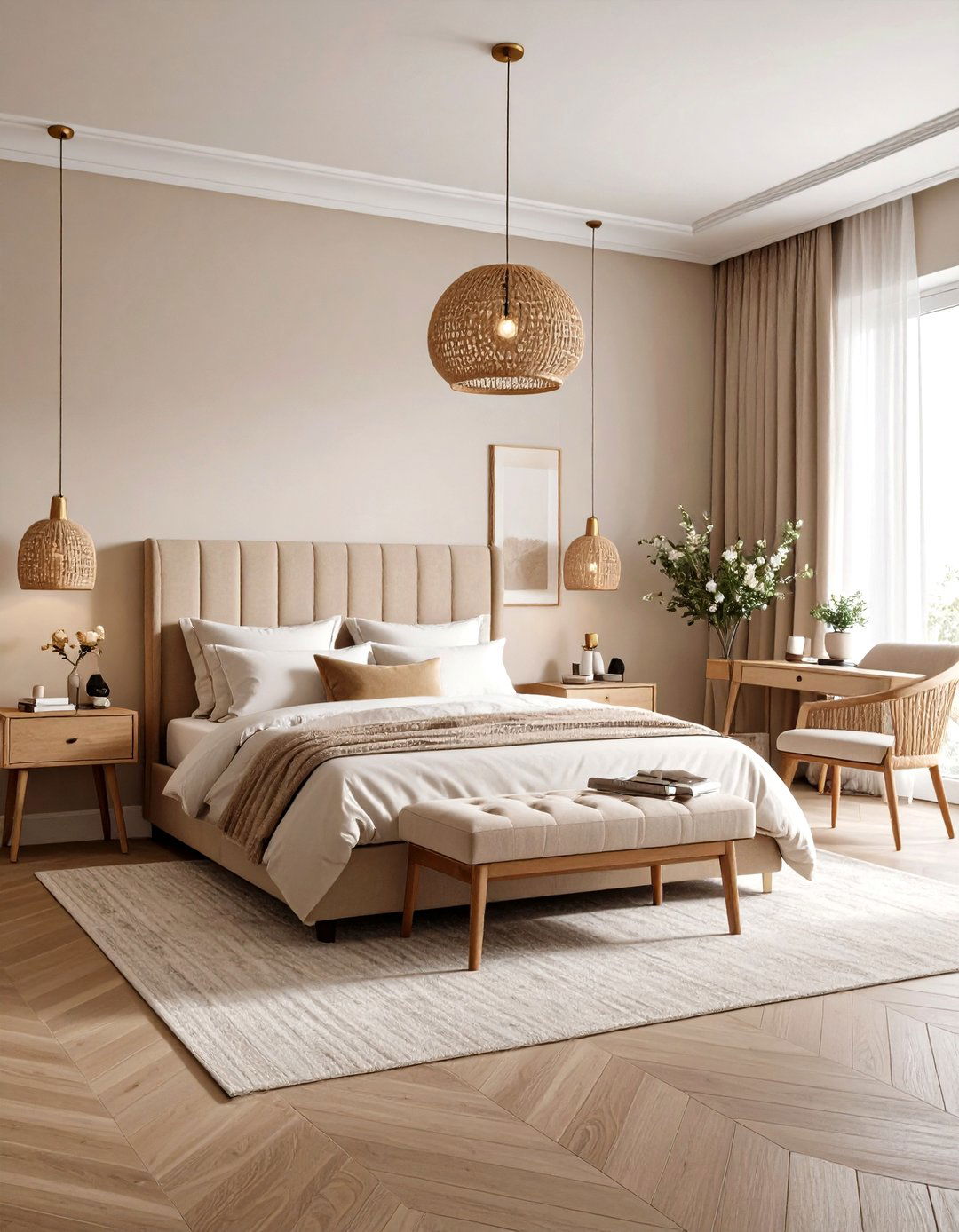
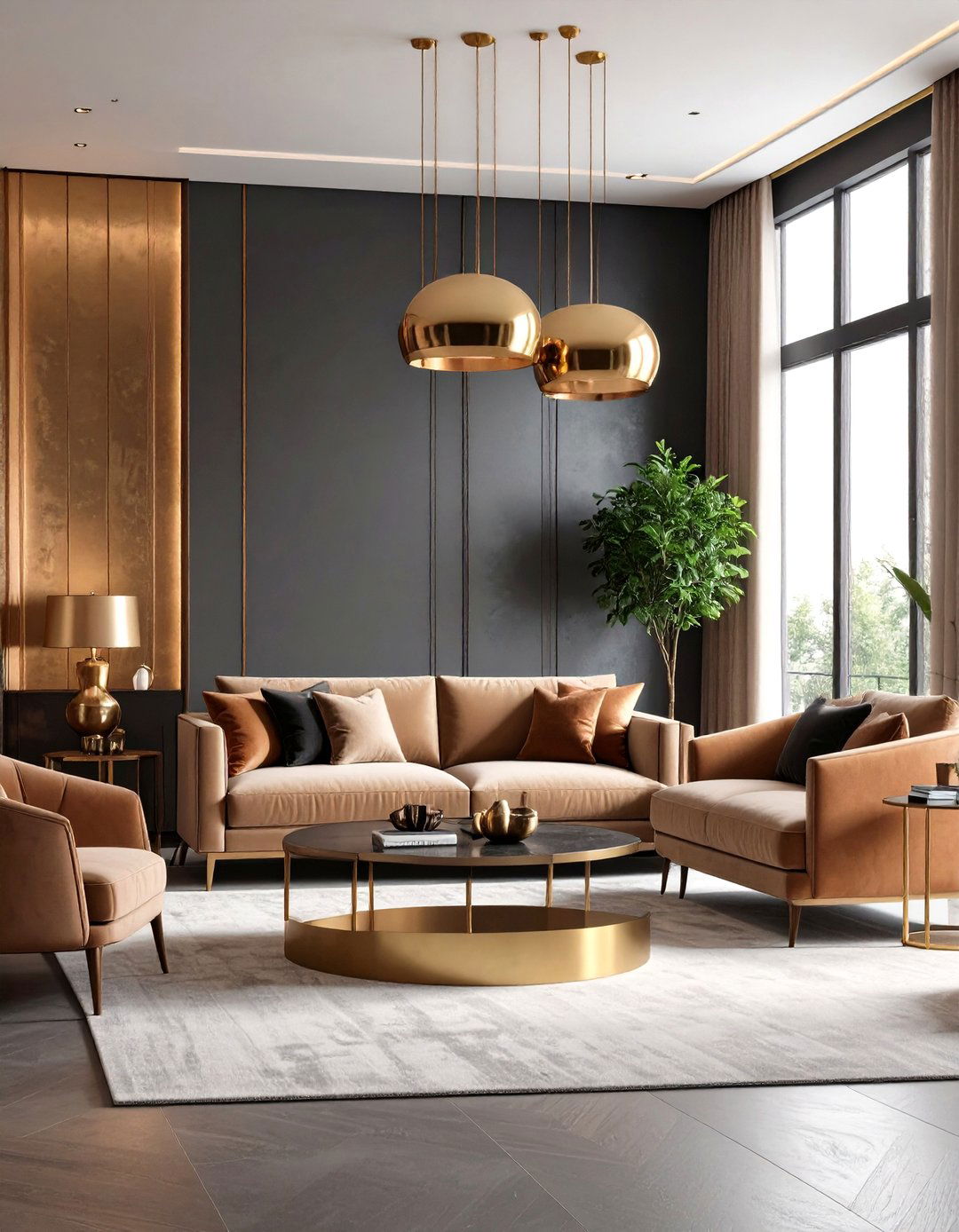

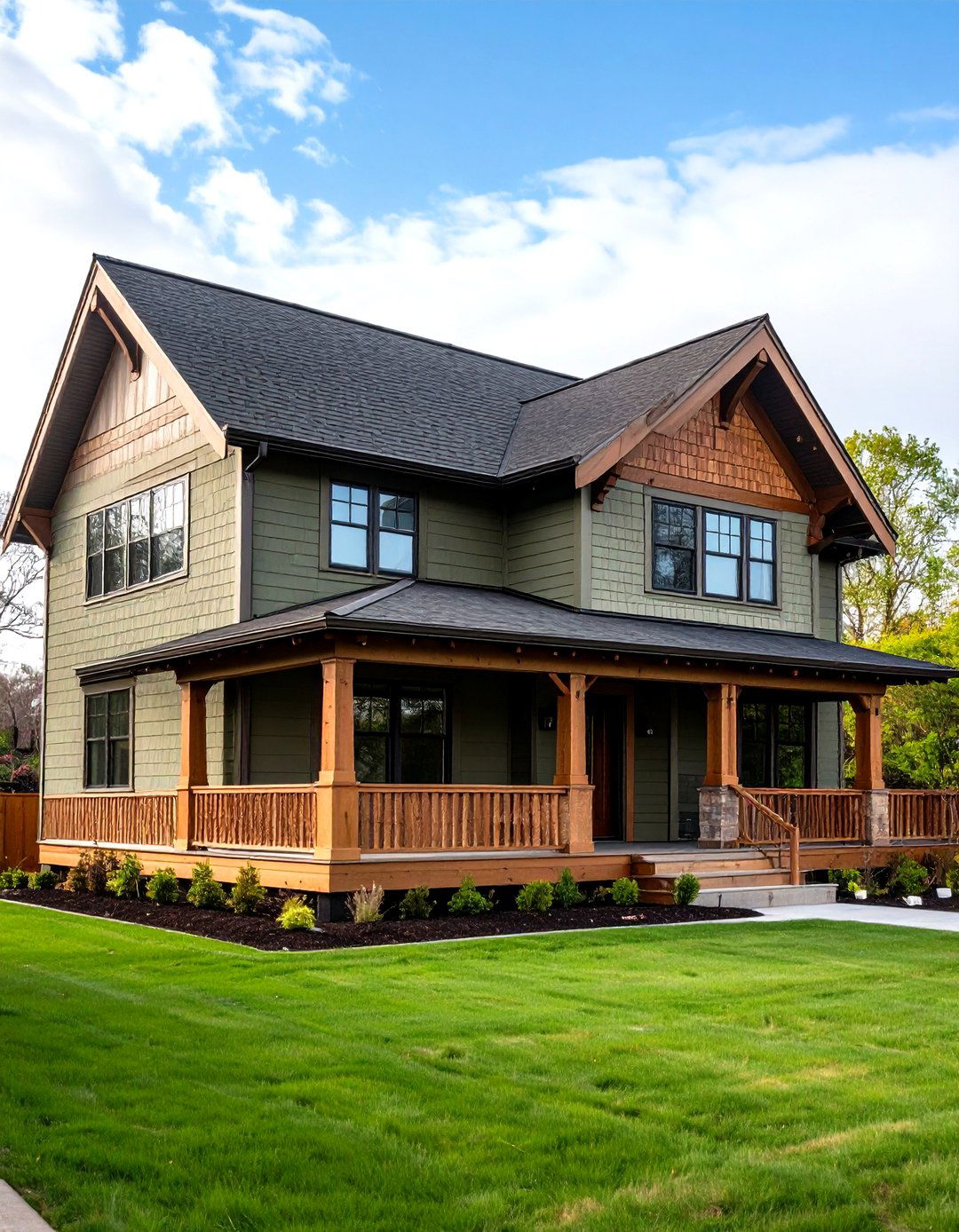
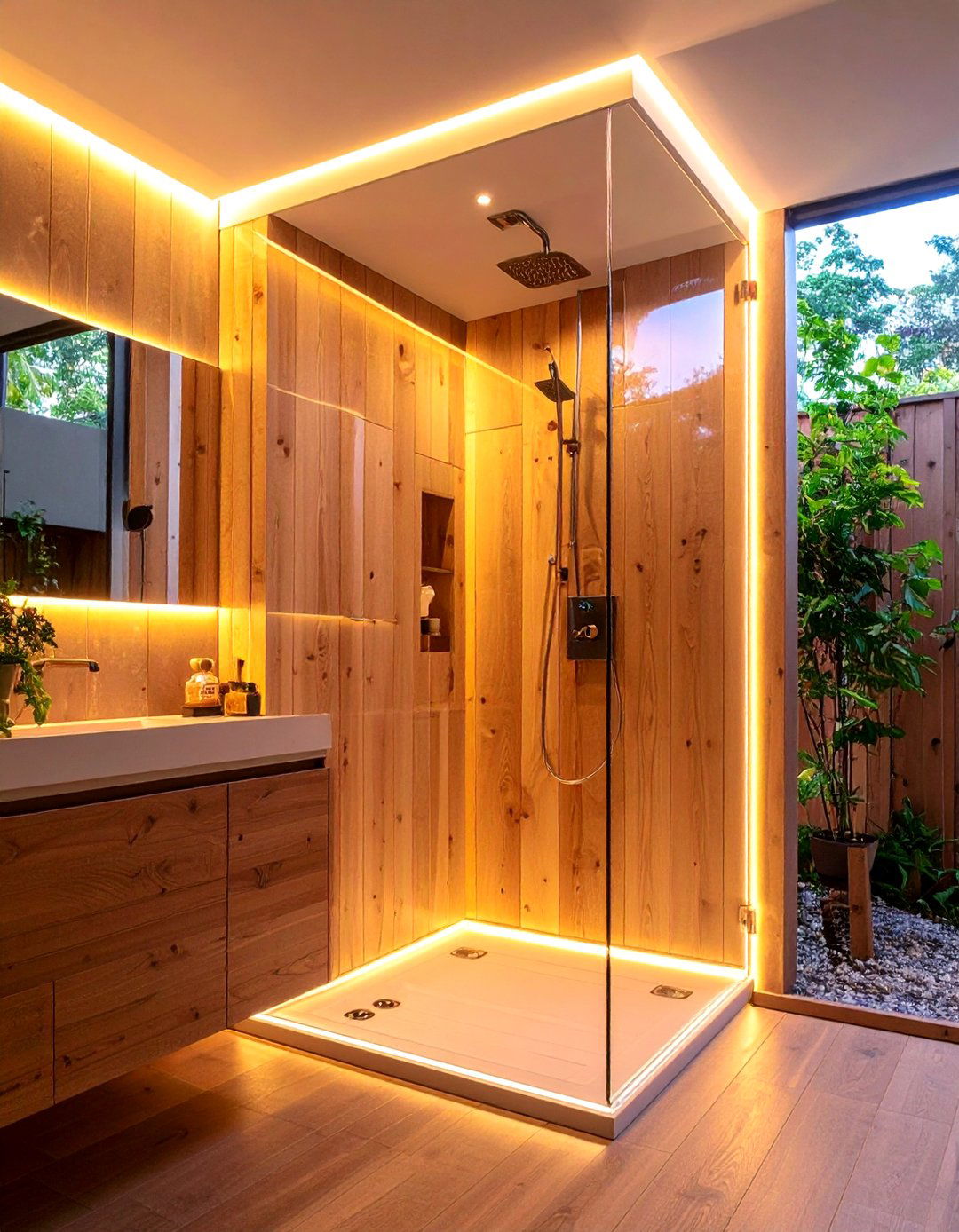
Leave a Reply